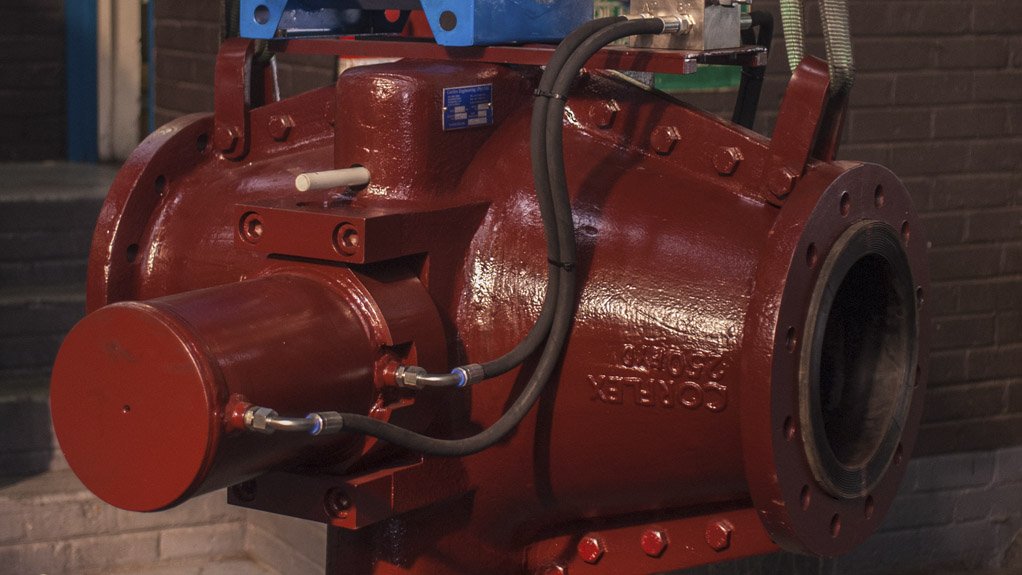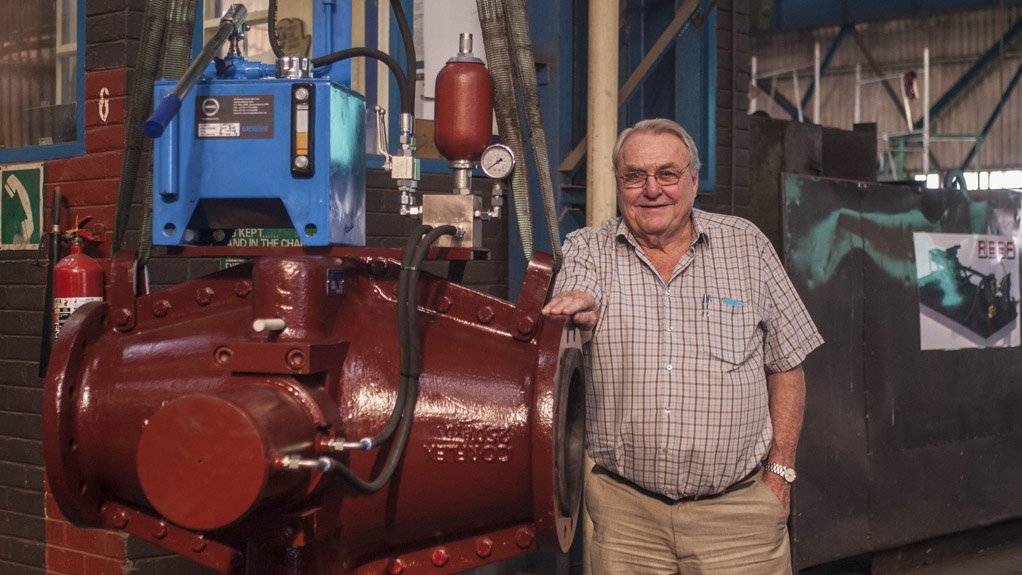The operational safety of pinch valves has been brought under the mag- nifying glass with companies calling for regulation to be implemented in the manufacturing and testing process.
Germiston-based pinch valves manufacturer Corflex MD Chris Webber tells Engineering News that, while pinch valves in the past were designed for lower pressures, often between 2 bar and 4 bar, modern pinch valves are being bought to handle pressures of up to 40 bar and higher.
Webber suggests that, in order to ensure the working condition of pinch valves, the design of the pinch valve must include the type and strength of materials used, ease of operation, the safety of the operator and the minimum maintenance needed.
He adds that, as there are no regulations in place, producers are able to supply valves that could potentially fail under the high pressures they are subjected to. Traditionally, pinch valves were fitted with rising actuators, which are less expensive to produce.
Webber notes that, with this type of actuation, the pincher mechanisms used to stop the flow are usually bolted together with two nuts or other fasteners, which take the full brunt of the force – in excess of 120 t in some cases.
“The fact that there are no national or international standards on pinch valves means purchasers often blindly accept the suppliers’ assurances that their valves are suitable. Sooner or later, there is going to be a major accident,” Webber notes.
To improve the safety of pinch valves operating at high pressures, which are often located in areas with a number of personnel, Webber suggests mandatory physical pressure testing take place on the sleeves used within the pinch valve.
“A pinch valve sleeve is basically a rubber hose, which is reinforced with either fabric or two ply, or more, steel wire. The strength of a pinch valve sleeve is dependent on the strength of the reinforcement used in its construction. The standard for high-quality hose manufacturers is a working pressure of 25% of the calculated burst pressure, but, because the sleeve goes into a valve casing, the calculated burst pressure of the sleeve can be reduced to 3:1, but the 2:1 test should remain,” he states.
The valve casing should be strong enough to withstand the test pressure of the sleeve in the event of a sleeve failure as well as able to support the pincher mechanism. Fasteners should also be checked to ensure that they do not exceed their safe working load.
“We also suggest that any valve that requires more than 30 t (30 000 kg) of pressure to seal should undergo a witnessed American Petroleum Institute 598 standard sealing test to ensure that enough pressure is exerted on the sleeve so that it does not leak with enough extra force to ensure an adequate seal,” Webber claims.
Headds that, when mines buy pinch valve sleeves of competitor companies, care should be taken to ensure that the spare sleeve bought is suitable for the pressure that it is supplied for. In one instance, a competitor supplied a spare sleeve for a very high pressure Corflex pinch valve which had a very large sleeve flange to suit the larger-diameter wire for the higher pressure.
“When the company saw that the sleeve did not fit our valve body because of the very much larger flange, the supply company [removed] their sleeve and built up the flange using rubberised tape. The valve could have malfunctioned but we were lucky enough to find out about it and stop its use,” he states.
Another factor that has crept in is the supply of thin pipline flanges on pinch valves which do not conform to the minimum South African Bureau of Standards standard.
Webber adds that, while potentially dangerous pinch valve practices can be stopped, it usually means an increase in expenses for producers.
“It is important that engineers become more familiar with the actual forces required to close and seal pinch valves at pressure,” he concludes.
Edited by: Zandile Mavuso
Creamer Media Senior Deputy Editor: Features
EMAIL THIS ARTICLE SAVE THIS ARTICLE
To subscribe email subscriptions@creamermedia.co.za or click here
To advertise email advertising@creamermedia.co.za or click here















